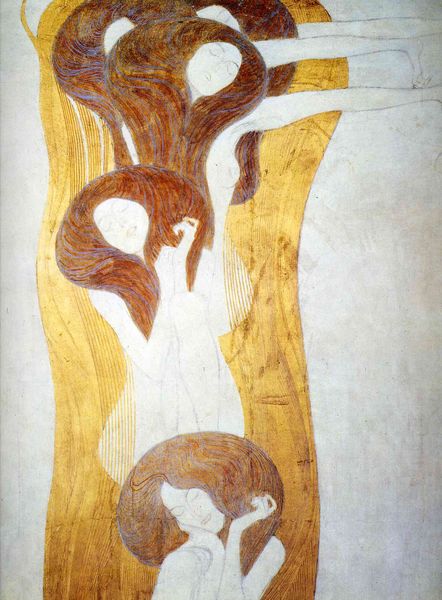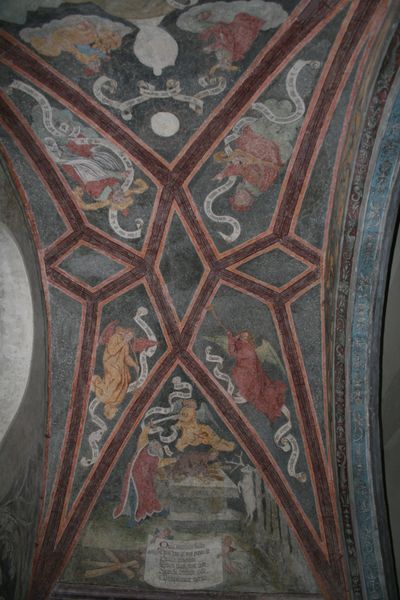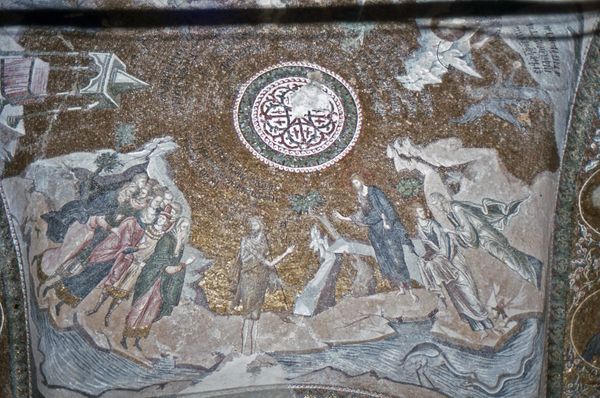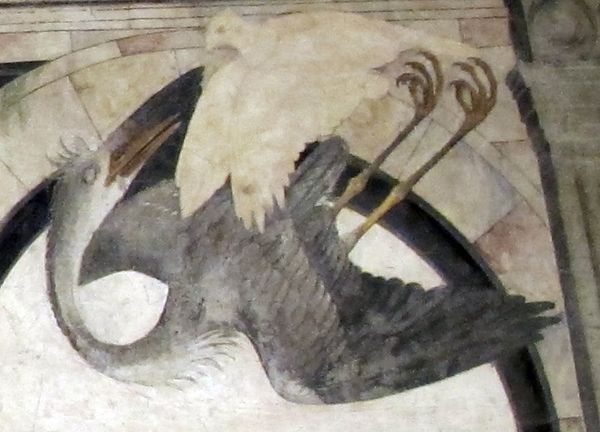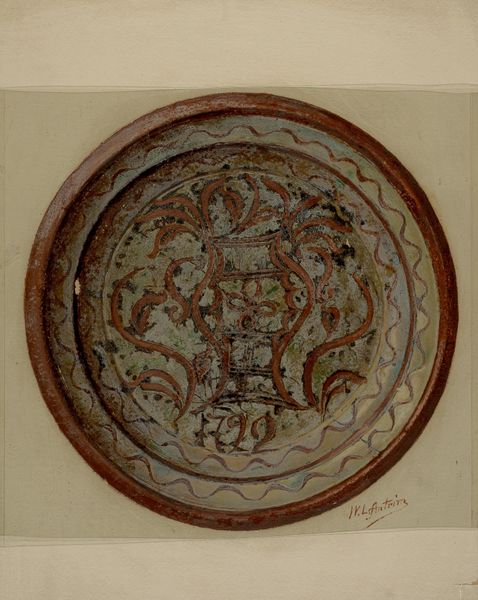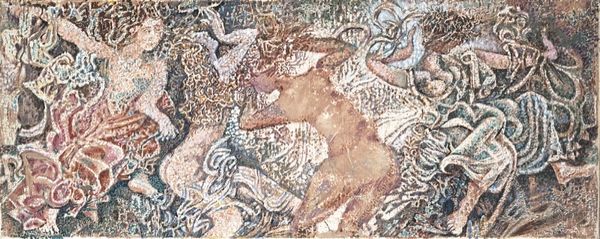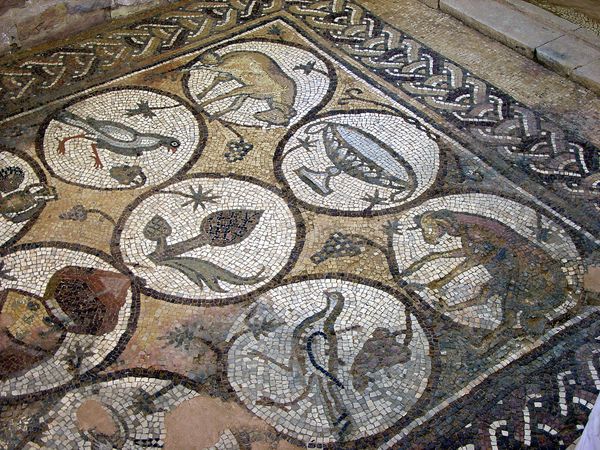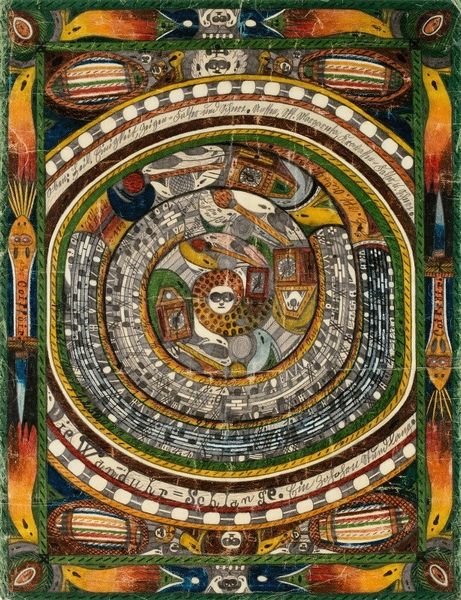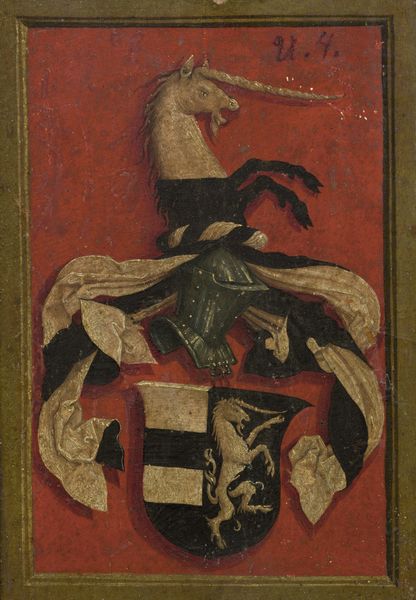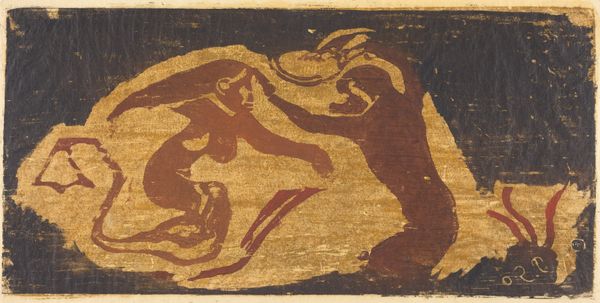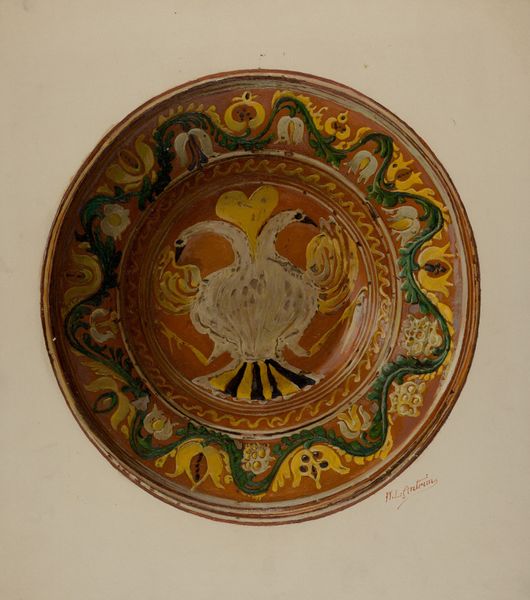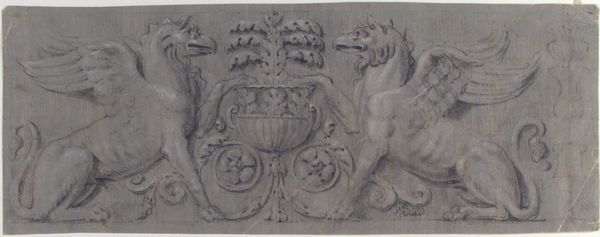
fresco, mural
#
byzantine-art
#
medieval
#
allegory
#
rough brush stroke
#
figuration
#
fresco
#
oil painting
#
christianity
#
men
#
history-painting
#
mural
#
christ
Copyright: Public domain
Editor: Here we have a fresco fragment entitled "The Last Judgement," created around 1408 by Andrei Rublev for the Assumption Cathedral in Vladimir. The colors are muted, and the whole thing has this weighty, ancient feel. I’m intrigued by how dynamic, almost playful, these figures appear within such a serious theme. What catches your eye when you look at this piece? Curator: Ah, yes, "playful"... that's a curious, but not inaccurate take. This fragment pulsates with a kind of restrained energy, doesn't it? Look how Rublev, even within the Byzantine tradition, softens the terror usually associated with the Last Judgement. Can you sense the hope, a glimmer of redemption perhaps, interwoven with the inevitable doom? Editor: I think so. Is that because of the rounded composition, all the shapes nestled inside of the circular format? Curator: Precisely. It’s a universe unto itself, isn’t it? Like looking into a celestial snow globe where destiny plays out in miniature. Now, observe the animal forms… lion, eagle, ox... and the enigmatic figure who resembles an angel. What do you make of their positioning within the circle? Is there a symbolic story there? Editor: It makes me wonder if they stand for different stages or elements of the cosmos folding in on itself? Almost as if all living things return into nothingness. Curator: Yes! That's a beautiful way to phrase it. They might evoke the Four Horsemen of the Apocalypse too, but Rublev imbues them with a tenderness far removed from violence. It's a meditation on endings as a transition, rather than obliteration, no? So what lasting impression does the work leave with you, given it is about endings? Editor: I appreciate the focus on transitions. It’s usually all hellfire and brimstone with these kinds of pieces, but it has a sense of acceptance. Curator: Precisely! A gentle apocalypse. Now, isn't that a concept worth pondering on a rainy Tuesday?
Comments
No comments
Be the first to comment and join the conversation on the ultimate creative platform.
